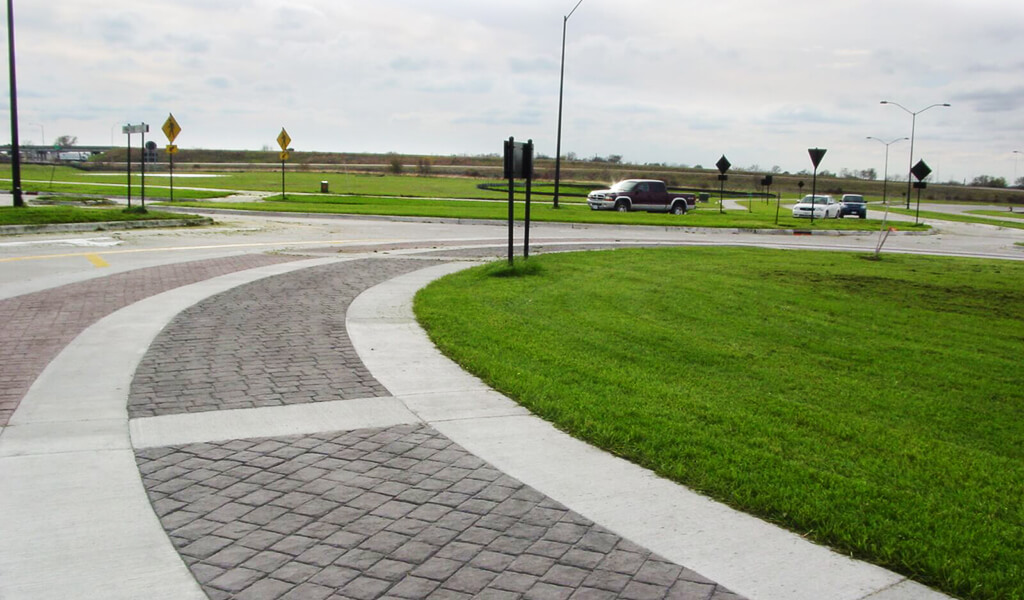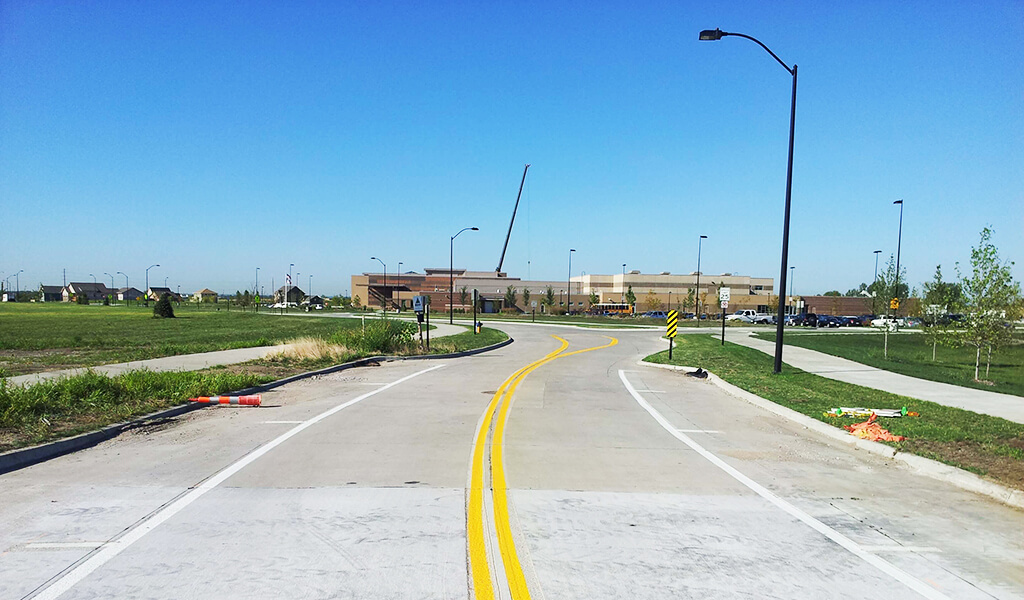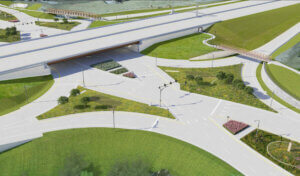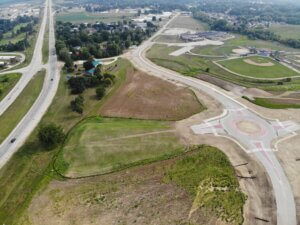
New Roadway Design Creates Better Access to Ankeny Schools
The City of Ankeny partnered with Snyder & Associates to design and oversee the construction of new public infrastructure supporting the new Ankeny High School and Southview Middle School on the north side of the Prairie Trail Development. Prairie Trail is a low-impact development that uses the concepts of Context-Sensitive Solutions (CSS) that advocate for the creation of communities where people can drive, bike, or walk to home, work, and school.
The main portion of the infrastructure project included new sanitary and storm sewers, along with new pavement on SW Magazine Road, from SW State Street to U.S. Route 69 (Ankeny Boulevard). A new section of Cherry Street, linking SW Magazine Road and SW Ordnance Road, was also designed to provide access to and between the two new school facilities. Since SW Magazine Road provides the most direct public access to both schools, the intersection at Ankeny Boulevard and SW Magazine Road also needed to be widened to add turn lanes and traffic signals.
Clean Aesthetics and Safe Traffic Flow Dominate Design Concept
To handle the projected increase in traffic with the construction of the new schools, the design team was faced with multiple challenges in blending the safe movement of traffic around and through the school area while keeping CSS concepts at the forefront of the analysis, including:
- The safe movement of pedestrian traffic (mostly students) between the schools during peak traffic periods.
- The necessity to reduce traffic speeds in anticipation of less-experienced drivers using the roadways around the schools.
- Improving the stormwater drainage in the immediate area to lessen the environmental impact.
- Traffic staging considerations to keep delays to a minimum along the heavily traveled Ankeny Boulevard during the construction process.
Creative Recommendations to Meet Context-Sensitive Solution Benchmarks
To address the pedestrian traffic concerns, an 8′-wide side path was constructed along the length of both roadways. This provides ample room for pedestrians and bicycles while providing a sizable buffer from vehicle traffic. The roadways along the corridor were also constructed with narrower than normal lanes in order to slow traffic. With a similar goal in mind, Snyder & Associates performed an analysis of the main entrance of the high school at the intersection of SW Cherry Street and SW 11th Street. To further calm traffic, a roundabout was recommended to provide the safest environment for a large number of pedestrians crossing between the middle and high school, while efficiently allowing traffic to enter and exit both schools. Our design team worked with the City of Ankeny and the school district to educate stakeholders about the operational and safety benefits of a roundabout at that location.
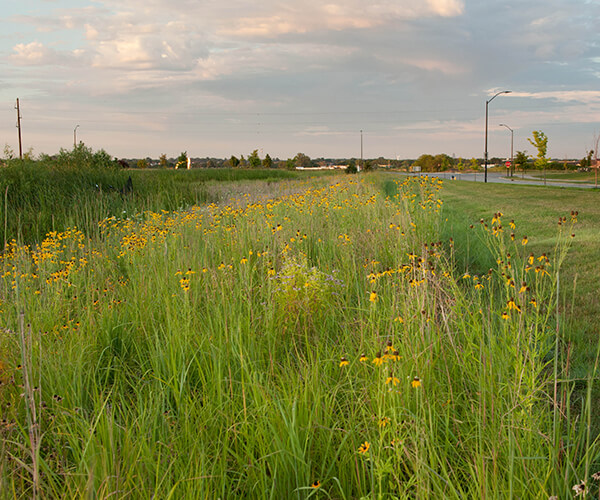
Native plantings were used extensively in the bioswales along the length of the SW Magazine Road corridor.
Numerous bioswales were installed in the right-of-way along SW Magazine Road to improve the quality of stormwater runoff. Bioswales are landscape elements designed to remove debris and pollution from runoff water. In addition to the bioswales, decorative crosswalks, concrete pavers, and tree plantings were all a part of the final CSS design.
Snyder & Associates coordinated closely with the City of Ankeny, the Ankeny School administration staff, utility companies, the developer, contractors working on the school construction, and other private developers throughout the design and construction of the project to ensure efficient completion. To minimize traffic delays, the entire project was completed in five phases over four construction seasons to accommodate construction of the schools and several adjacent developments in the impact area.
